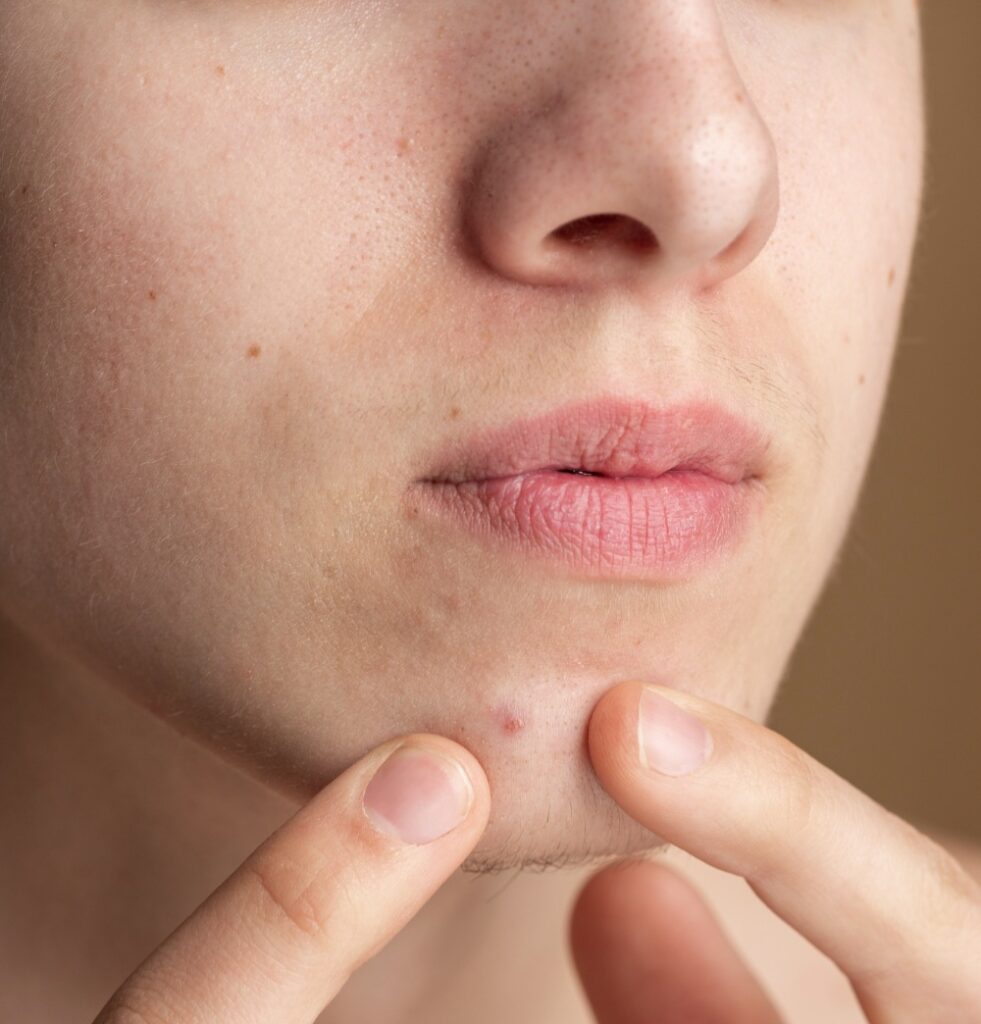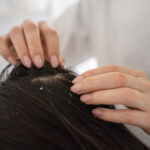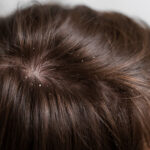
In this article
Red dots on your skin can appear for various reasons, including acne, autoimmune conditions, and viral infections. These dots may be temporary or recurring, depending on the underlying cause. Identifying the cause is crucial for your healthcare provider to prescribe the correct treatment without exacerbating your symptoms.
Common Causes
Acne Vulgaris:
Acne is the most prevalent cause of red dots on the skin, affecting approximately 85% of people aged 12-24. Acne occurs when pores become clogged, leading to pimples that can include red dots. These may appear on the face, back, or other parts of the body.
What Do Red Dots on the Skin Look Like?
Red dots can vary significantly in size, appearance, and location on the body. Their appearance can differ based on skin tone, with some appearing darker on darker skin.
Conditions
- Shingles or Chickenpox: Caused by the varicella-zoster virus, these can result in red spots, scabs, or blisters, typically on the chest, back, and face.
- Psoriasis: Leads to red skin spots, which may appear darker or purple on darker skin tones.
- Eczema: A chronic condition causing dry patches and red dots. It affects about 10% of people, causing periodic breakouts and remissions.
Causes of Red Dots on the Skin
Acne Vulgaris:
Commonly affects teenagers due to hormonal changes during puberty. Red dots associated with acne can lead to scarring.
Injury:
Cuts, scratches, or excessive heat can cause blood to pool under the skin, leading to petechia or purpura, which are clusters of red or purple dots.
Cherry Angioma:
These painless, red-orange spots are made of blood vessels and commonly appear on adults over 75, typically on the arms, legs, and scalp.
Autoimmune Disorders
- Eczema: Causes recurring red or purple patches, especially in children under five.
- Guttate Psoriasis: Characterized by small red dots on the torso or limbs, often following a respiratory infection.
- Lichen Planus: Results in itchy red or purple bumps, typically on the ankles, wrists, or lower back, and can be triggered by medications or infections.
Irritants and Allergies:
Exposure to irritants or allergens can lead to contact dermatitis, causing itchy rashes and clusters of red dots. Hives, triggered by allergic reactions, certain foods, stress, or medications, can also cause raised, itchy welts.
Infections
- Varicella-Zoster Virus: Can cause red dots and scabs, leading to shingles when dormant.
- Cellulitis: Bacterial or fungal infection around hair follicles, causing painful red dots.
- Ringworm: Fungal infection resulting in red patches, commonly affecting the scalp, groin, or feet.
- Impetigo: Bacterial infection causing red sores that burst and leak fluid, often around the mouth, nose, or arms.
Less Common Causes
- Scabies: Caused by mites burrowing into the skin, leading to itchy spots.
- Pityriasis Rosea: Harmless red dots often appearing on the abdomen or back, resolving on their own.
- Hand, Foot, and Mouth Disease: Viral infection causing red sores and rashes on the hands, feet, and mouth, along with fever and sore throat.
When to Contact a Healthcare Provider
If red dots persist for more than two weeks after home treatment or are accompanied by fever, fatigue, or swelling, consult your healthcare provider. Severe symptoms like breathing difficulties, fainting, throat tightness, severe swelling, wheezing, or gasping require emergency medical attention.
Treatments for Red Dots on Skin
Home Management:
- Wash affected areas with soap and water.
- Apply cool compresses and soak skin in oatmeal.
- Use OTC pain relievers like ibuprofen or acetaminophen.
- Apply OTC topical corticosteroids and antihistamines.
- Use emollients and moisturizing creams.
Medications
- Corticosteroids: Creams like betamethasone and triamcinolone acetonide.
- Calcineurin Inhibitors: Tacrolimus and pimecrolimus for eczema.
- JAK Inhibitors: Topical ruxolitinib and oral upadacitinib for severe cases.
- PDE-4 Inhibitors: Crisaborole for mild-to-moderate eczema.
- Biologics: Injections like dupilumab for advanced cases caused by allergic reactions.
Phototherapy:
Treatment using UVB, UVA1, or PUVA rays to prevent cell overgrowth in conditions like psoriasis and eczema, sometimes combined with medications that increase skin sensitivity to light.
Prevention
- Clean skin gently with mild soaps in warm water.
- Use hypoallergenic, fragrance-free soaps, detergents, and shampoos.
- Wear breathable cotton clothing.
- Maintain a comfortable home temperature and use a humidifier.
- Protect skin from sun exposure with UV-protective sunscreens.
- Relieve itchiness with cold compresses or ointments instead of scratching.
- Get vaccinated for shingles.
- Manage stress with mindfulness, meditation, or other relaxing activities.
Complications
Untreated conditions like eczema and psoriasis can lead to additional health issues such as cellulitis or arthritis. Red dots can also leave scars, especially from acne, and may affect mental health, causing feelings of depression or anxiety. If this occurs, seek help from a healthcare provider
A Quick Review
Red dots on the skin can be caused by acne, autoimmune disorders, infections, or injuries. These spots vary in appearance and severity. Identifying the cause is crucial for effective treatment, which can range from home remedies to medications. Consult a healthcare provider if symptoms persist or worsen











